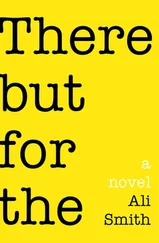It’s not thoughts, George says. It’s fought.
No it isn’t, George’s mother says.
It is, George says. The line goes: we dressed up and fought, then thought, make amends .
No, her mother says. Because they always write such intelligent words. Imagine. Dressing up in thoughts because thoughts make amends. Thoughts make amends. It ought to be a figure of speech. If I had a shield, that’s what I’d want it to say in Latin on it, that’d be my motto. And I’ve always thought it a beautiful philosophical explanation and understanding of precisely why they were never being boring.
Your version doesn’t make sense, George says. You can’t dress up in thoughts. It’s fought . It’s obvious. You’re mishearing it.
I’ll prove it to you, her mother says. Next chance we get we’ll play it and listen.
We could look up the lyrics online right now, George says.
Those online sites are full of mistakes, her mother says. We’ll use our human ears and listen together to the original when we get home.
I bet you fifty pounds I’m right, George says.
You’re on, her mother says. Prepare yourself for a substantial loss.
Francesco de what? the woman behind the information desk had said.
Cossa, George said.
Cotta? the woman said.
Cossa, and it’s del, George said. With an l.
Della Francesca, the other woman, coming over, said.
No, George said. Francesco. Then del. Then Cossa. Francesco del Cossa.
The second woman shook her head. The first one shook her head.
It’s a picture of St Vincent. St Vincent of Ferrara, George said.
Actually, George had been wrong about that. It’s not Ferrara. It’s a painting of a saint called Ferrer and nothing to do with the place George has been to in Italy.
But even so, neither of the women at the information desk in the gallery back on that first day George went to see St Vincent Ferrer recognized the name of the painter or the picture. Probably no one ever asks about anything here except the really famous paintings, which makes it fair enough, not to know, because a person can’t be expected to know about every single painting in a gallery of hundreds, no, thousands, even if he or she works on the information desk of what’s just one wing of it.
And when George first looked at the painting herself she’d thought it wasn’t anything much. You could easily walk past it and glance at it and think you’d seen all you wanted to. Most people, most days, as George has seen day after day, do. It is not what you’d call an immediately prepossessing picture. It had taken a bit of looking to get past her own surface reaction to it. It’s not like those ones in the palace in Italy, or it doesn’t seem to be, at first look.
If you wouldn’t mind spelling it, thank you, one of the women said.
She typed what George said into a computer. She waited for a result. When it came, both women looked amazed, like they’d really pulled something off, and then delighted like George’s asking and their being able to answer her had made their day better.
It’s in Room 55! the first woman said.
She looked like she might even want to shake George’s hand.
That was three weeks ago near the start of March. Since then, twice a week, George has been getting up, putting her clothes on, having breakfast, making sure Henry’s ready for school, seeing him off on the bus, going into the front room and doing the dance thing in honour of her mother to whatever random French song comes up on the playlist, putting her jacket on, going to the old bureau and filching the Subverts bank card (her father has forgotten about this account) then leaving the house as if to go to school but doubling back round the other side of the house where her father can’t see which direction she’s taking and cycling to the station instead, where she hangs around in the ticket place or the waiting room for the hour it takes till the cheaper fares kick in. Then George, travelling below surveillance cameras like people in novels from the past used to pass below the leaves or bare branches of trees and the eyes and wings of birds, nods to the tower there on the city horizon like a mega insect antenna, where fifty years ago the singer threw the bread roll at the maître d’, goes down into the Underground and comes up again in a different place not far from the wing of the gallery where the only painting in this country done by the painter her mother liked is.
Francesco del Cossa
(about 1435/6–about 1477/8)
Saint Vincent Ferrer about 1473–5
Saint Vincent Ferrer was a Spanish Dominican preacher, active throughout Europe and ardent in the conversion of heretics. Here he holds the gospels and points upwards to a vision of Christ displaying his wounds. Christ is flanked by angels holding instruments of his Passion. This is the central part of an altarpiece from a chapel dedicated to Saint Vincent in San Petronio, Bologna.
Egg on poplar NG597 Bought 1858.
The gallery knows more about the man in the picture than it does about the painter who painted it. About. There is nothing here about the painter except the fact that they don’t know for definite the year he painted this picture or the years he died and was born.
The painting is in a room of other pictures by painters from around the same time. At first all these pictures by the other people look more interesting than this one, which just looks like another religious picture (first reason not to look) of a rather severe-faced monk (second reason not to look) who’s ready and waiting with his finger up, holding a book up and open in his other hand, with which, both finger and book, it looks like he’ll probably admonish anyone who does stop and look at him (third reason not to look).
But then you notice that he’s not looking at you. He’s looking past and above you, or into the far distance, like there’s something happening beyond you and he can see what it is.
Then there’s the stone road off to the side of him which seems to be changing from road into waterfall as you look, the paving stones literally morphing, stone to water.
That lets you start to see that the picture is full of things you’d not expect. There’s a Jesus at the top in a sort of gold arch, he looks weirdly old, a bit rough and ready for a Jesus, a bit friendly, like a well-worn human being or a tramp who’s been dressed up as Jesus. He’s wearing salmon pink which somehow makes him (Him?) look like nothing else in the picture and he’s surrounded by angels who are floating, but very unostentatiously, on clouds. Their wings are bright red or purple or silver. They could all be either male or female. They’re holding torture implements like the people in an S&M session online but really unlike an S&M session in their calmness, or is it sweetness? The information placard says they’re holding ‘instruments’, which is apt because it’s quite like they’re about to play music on them, like a small orchestra waiting to tune up.
Then you notice that the saint is standing on a little table. The table is like a tiny theatre stage. This makes the black cloak-like thing he’s wearing start to look like theatre curtain too. You can see through the table legs to the base of the pillar behind him and it’s like a behind-the-scenes revelation, like it’s all theatre, but at the same time the wrinkles in the skin of the wrist that’s holding the book up are real-looking. They act exactly like the skin of a hand that’s holding something heavy up does.
Best of all, up at the level of his head, the pillar’s had its top broken off and there’s what looks like a miniature forest growing out of it.
There are very small people in the background behind the saint’s legs. They’re meant to be small because of perspective but at the same time it makes it look like this man is a giant and sure enough, when you look away from this painting at the others in the room it’s like they’ve all been dwarfed. After this painting they look flat and old-fashioned, as if they’re stale dramas and pretending to be real. This one at least admits the whole thing’s a performance.
Читать дальше












